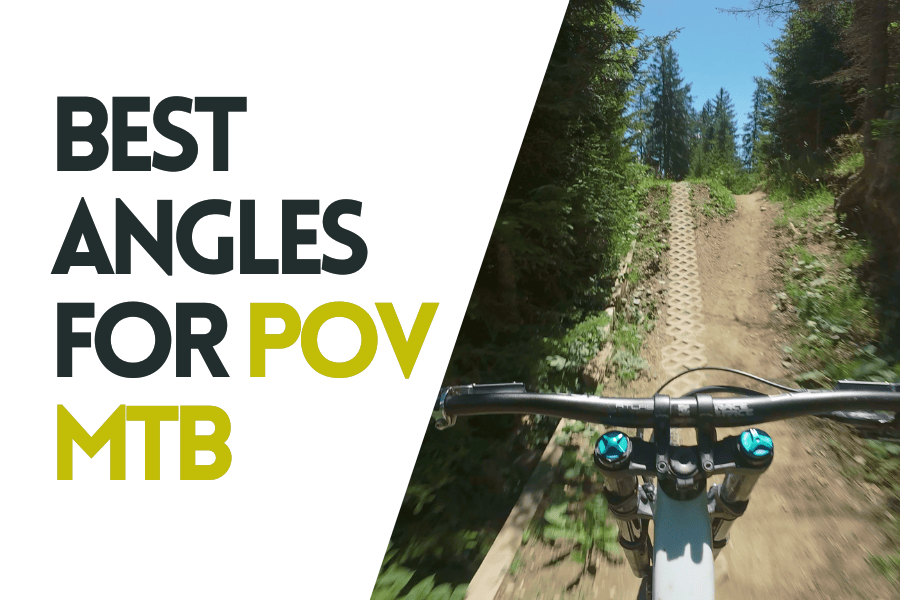People enjoy watching POV videos from chest mounts the most, but those are not the most enjoyable to wear all day. Instead, the helmet mount is – but it’s also by far the least liked by viewers (zero votes in my poll below).
MTB POV camera mounts ranked from best to worst
- Chest mount: Immersive, fastest-looking, but clumsy to wear.
- Helmet chin mount: Immersive, easy to use but feels heavy to wear.
- Below helmet visor: Similar to the rider’s POV, but can get in your way.
- Helmet top: Easy to use, but looks slowest and visor blocks the bottom screen.
I’ve used all of the best action camera mounts for MTB and also asked the viewers of the Suspension Traveler YouTube channel what angle they like to watch most. Here are the poll results:

Choosing the best camera mount is a balance between enjoying riding and enjoying watching the video.
Chest mount
“immersive, fast, and relatable, but can be cumbersome to wear“
In the past, chest-mounted cameras were pretty horrid to watch without image stabilization. Now, it captures the best results.
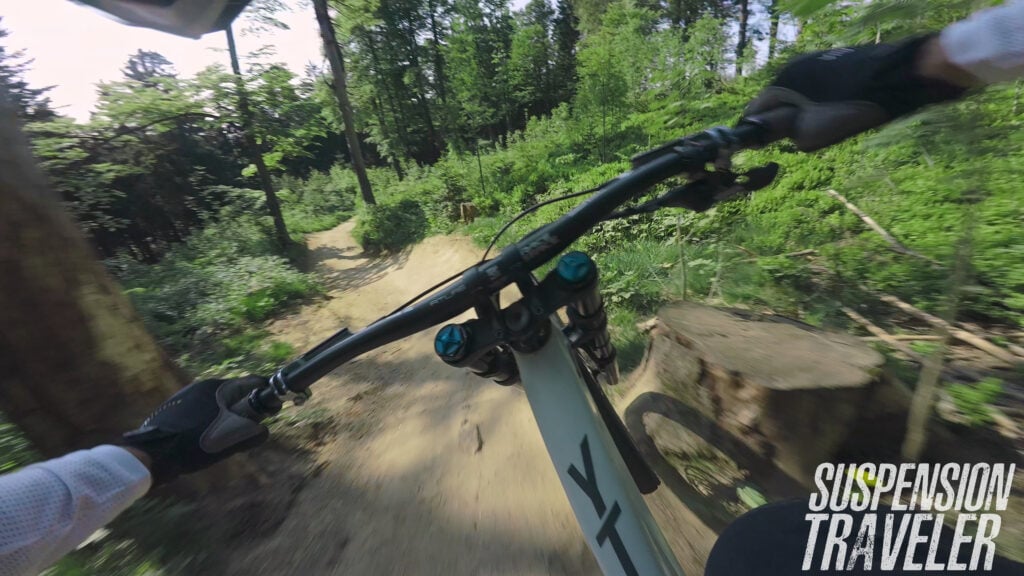
It’s the only perspective that can capture hands, handlebar, front tire, lean angle and the trail ahead.
There are only two downsides: one for you and one for the viewers.
First, the chest cam doesn’t follow head movement and may look in the wrong direction in tight turns. It points in the same direction as the bike, not the head. But with a wide FOV, the viewer can still look to the sides of the screen and into turns.
The second downside is actually wearing and setting up the chest mount for MTB POV. It’s clumsy but you get used to it. Still, I prefer riding without it if I can.
Recommended chest mounts
Personally, I have been using the GoPro “Chesty” chest mount because it’s the most silent and most comfortable one. I feel like DJI’s chest mount does sit more securely tho with the bigger base plate.
Generally, it’s hit-and-miss with the many third-party chest mounts. Most are pretty loud with clicking noises while riding.
Only the GoPro Chesty is built like a vest and can be worn while not closed. This is a relief since you need to tighten it pretty well to eliminate movement wherever you can. And not having buckles on your ribs helps with that too.
Helmet mounts
Chin mount
As you saw in the poll results above, chin mounts are a viewer favorite and can look very similar to chest mounts. They’re just a little higher up (and thus look slower) but follow the natural head movement to look ahead on the trail.
They’re very easy to use and sit securely. Rubber padding like on my DJI chin mount eliminate rattling. But so far out on the chin bar they have high leverage and pull the helmet down.
Which results in constant tugging and far more bouncing on rough trails. This is the only reasons I hate wearing them. The footage out of them is great!
Now to the most popular mounts by riders – not so much by viewers: helmet visor mounts.
Below visor mount
These are very easy to use and the weight is unnoticeable, but it can get unrelatable for the viewer. It’s a very difficult balance to get both the handlebar and the horizon (trail ahead) in the same shot.
The biggest problem tho is that even smaller action cams like the Gopro 12 Mini and DJI Action 2 (image below) get in your field of view.
A below-visor mount is highly dependent on your helmet if you can get it to work – in terms of mounting surface and visor angle adjustability.
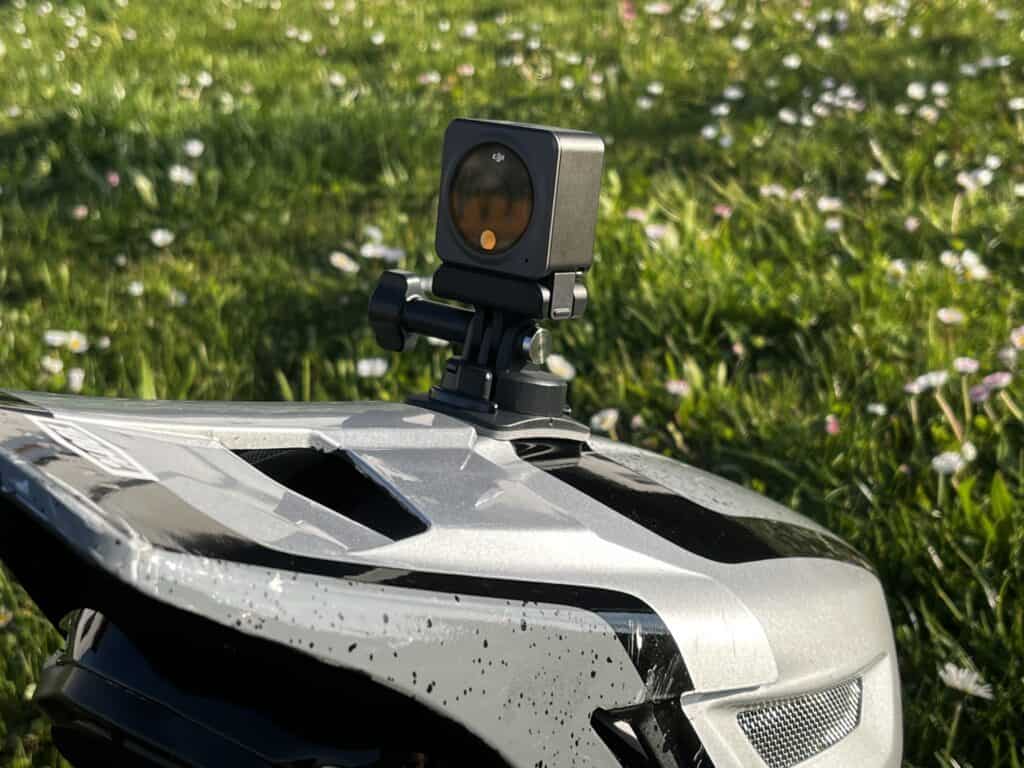
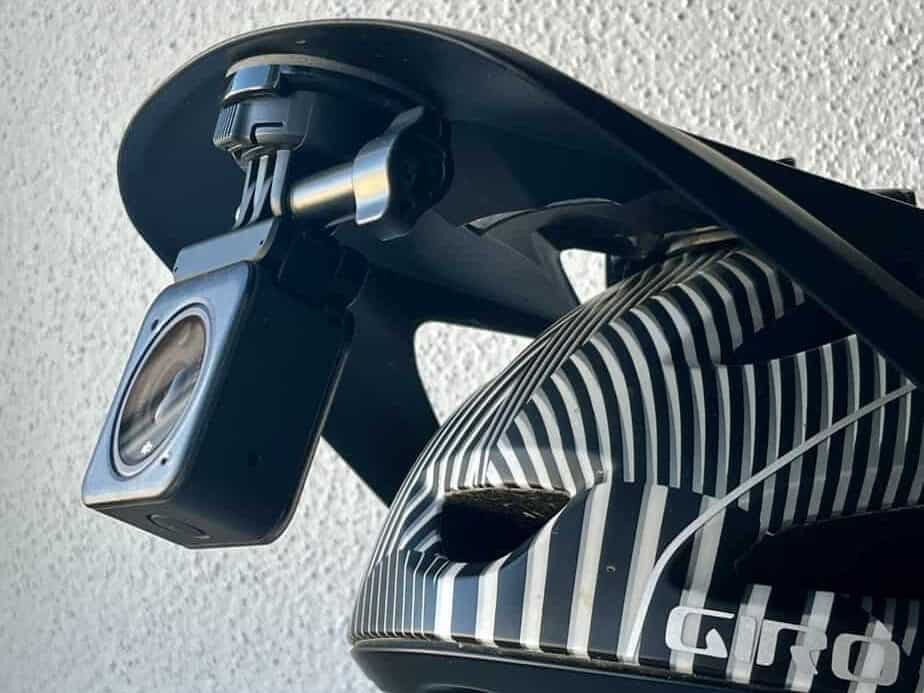
Top visor / helmet mount
Helmet perspectives are also known for the “GoPro effect” that makes any steep rough trail seem harmless and flat. That’s because there are very few points of reference for the viewer who only has visual and acoustic cues.
As you can see, the difference between top and below visor mounting is big. Different perspectives and only the below visor view can tilt down enough to show the handlebars (without being blocked by the visor).
Depth perception and lean angle also get lost. An ultra-wide-angle lens like the 155° field of view of the DJI Action cams helps with that issue.
But there’s a reason viewers find it unengaging.
